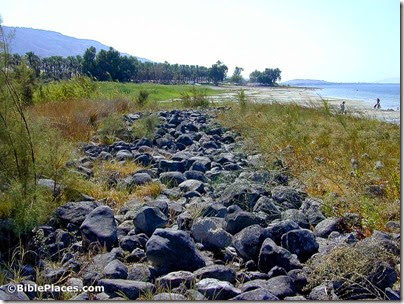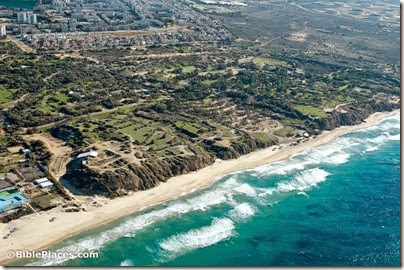The Iron Age volume by Peter M. Fischer is available for free download at Open Access. Tell Abu al-Kharaz was identified as Jabesh Gilead by Nelson Glueck and is located about 7 miles southeast of Tel Rehov (near Beth Shean) and 2 miles east of the Jordan River. The table on page 516 shows a complete chronological history of the site, including continuous occupation through the Iron Age with destructions in approximately 1050, 930, 850, 800, 770, and 732 BC.
The book’s abstract seems to begin with an error:
Tell city of Abu al-Kharaz is situated in the central Transjordanian Jordan Valley and excavated by the author from 1989 to 2012. The town flourished in the Early Bronze Age, and after an occupational lacuna of more than thousand years the site was re-occupied in the second half of the Middle Bronze Age and remained permanently occupied until the end of the Iron Age. The new volume is No. III in a series of three (The Early Bronze Age Vol. I, published by the Austrian Academy of Sciences Press in 2008, and the Middle and Late Bronze Ages Vol. II, in 2006).
The table of contents:
Preface 9
Chapter 1 Introduction and Vade Mecum 13
Chapter 2 Stratigraphy, Architecture and Finds 31
Chapter 3 The Pottery: Typo-Chronological Conclusions 389
Chapter 4 Radiocarbon Dating 457
- I. Radiocarbon Dates from Tell Abu al-Kharaz by E.M. Wild and P.M. Fischer 457
- II. Reflections on the Radiocarbon Dates from Pella by P.M. Fischer 461
Chapter 5 Discussion and Conclusions 465
- I. The People and their Land: Environment, Subsistence, Settlement and Ethnicity 465
- II. Written Sources, Administration and Politics 481
- III. Economy, Exchange of Goods and Communication Routes 482
- IV. Architectural Features and Installations 483
- V. Chronology 501
- A. Relative chronology 501
- 1. Local chronology 501
- 2. Regional synchronization by P.M. Fischer and T. Bürge 501
- 3. Interregional synchronization 512
- B. Absolute chronology and chronological conclusions 515
Appendices
- Appendix 1 Figurines 517
- Appendix 2 The Sphinx Handle 531
- Appendix 3 Cosmetic Palettes of Stone 535
- Appendix 4 Notes on the Glyptic Material and Ostraka 539
Bibliography 545
The report is pretty technical, but if you’ve ever wanted to see what the end result of an excavation is, this is an easy way to do so. One of my assignments for an introductory archaeology class is to spend an hour just browsing a final excavation report. You can learn a lot from the experience.
Fischer favors his site as ancient Jabesh Gilead over the more commonly proposed Tell al-Maqlub, and he gives some reasons on pages 481-82. The author’s general aversion to biblical connections is apparent from the fact that the 572-page work never mentions Jeroboam, Ahab, Hazael, Jehu, Ben-Hadad, Jehoash, or even Tiglath-pileser III.
The volume is available in print from Amazon for $165. The author’s website has more photos and information, though it is not up-to-date.
HT: Agade




